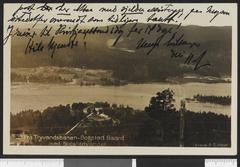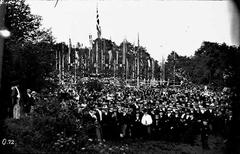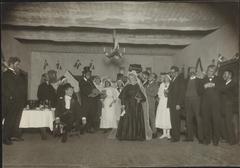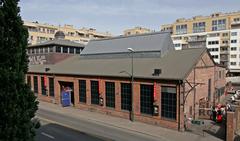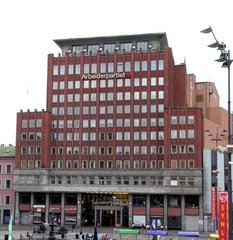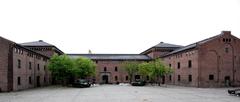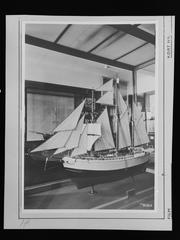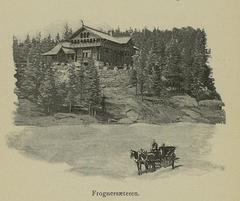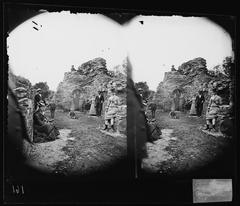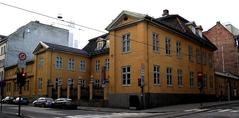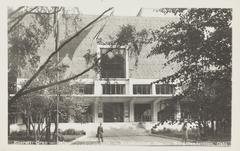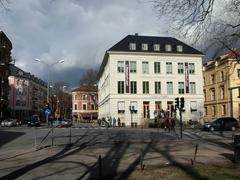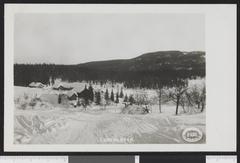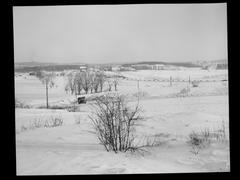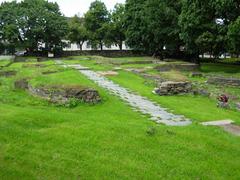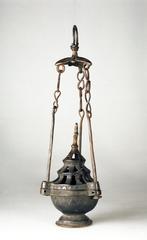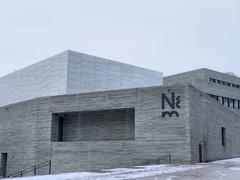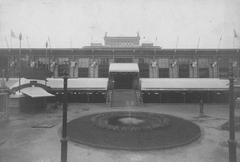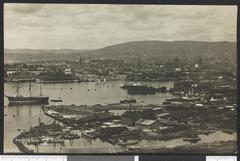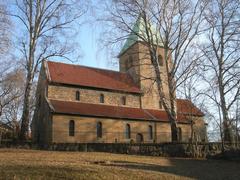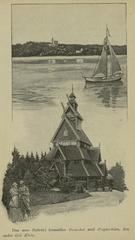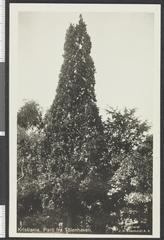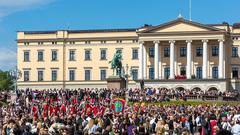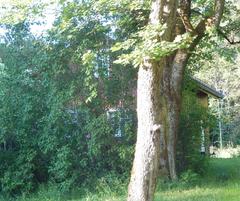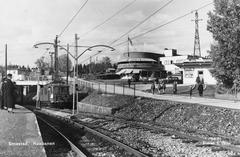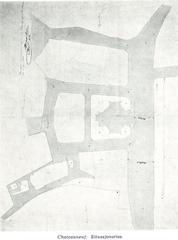Astrup Fearnley Museum of Modern Art: Comprehensive Visiting Guide for Oslo, Norway (2025)
Date: 14/06/2025
Introduction
Nestled on Oslo’s scenic Tjuvholmen waterfront, the Astrup Fearnley Museum of Modern Art is a landmark of contemporary culture and innovative architecture. Since its founding in 1993 by Norwegian shipping magnate Hans Rasmus Astrup, the museum has emerged as one of Scandinavia’s leading venues for modern and contemporary art, renowned for its dynamic collection, forward-thinking exhibitions, and the iconic Renzo Piano-designed building it has called home since 2012. Visitors can expect a harmonious blend of art, architecture, and nature, making the museum a must-see destination whether you are an art lover, a cultural explorer, or a traveler seeking to experience Oslo’s vibrant creative scene (AF Museet; Wikipedia).
Quick Facts
- Location: Strandpromenaden 2, Tjuvholmen, Oslo, Norway
- Hours: Tuesday–Sunday 11:00–18:00; Thursday until 20:00; Closed Mondays
- Tickets: Adults 140–150 NOK; discounts for students/seniors; children under 16/18 free
- Architect: Renzo Piano Building Workshop
- Collection: Over 1,500 works by leading international and Nordic artists
- Accessibility: Fully wheelchair accessible
Table of Contents
- History and Founding
- The Astrup Fearnley Family Legacy
- Collection Focus and Exhibition Highlights
- Renzo Piano’s Architectural Vision
- Visiting Hours and Tickets
- Getting There & Accessibility
- Travel Tips & Nearby Attractions
- Special Events & Guided Tours
- Role in the Art World
- Controversies and Funding
- Recent Developments and Milestones
- FAQ
- Summary & Call to Action
- References
History and Founding
The Astrup Fearnley Museum opened in 1993, representing a turning point for contemporary art in Norway. Before its inception, the Norwegian art scene lacked institutions focused solely on contemporary works. The museum was the brainchild of Hans Rasmus Astrup, a passionate art collector who, beginning in the 1960s, sought to make contemporary art accessible to the public. The museum’s financial roots trace to the Thomas Fearnley Foundation and the Heddy and Nils Astrup Foundation—philanthropic organizations established by the Fearnley family, a name synonymous with Norway’s maritime and civic legacy. In 1995, the foundations merged to form the Thomas Fearnley, Heddy and Nils Astrup Foundation, solidifying the family’s ongoing commitment to art patronage (Wikipedia; Astrup Fearnley Group).
The Astrup Fearnley Family Legacy
The Fearnley family’s influence stretches back to the 19th century, rooted in shipping and later branching into finance and culture. Hans Rasmus Astrup became sole owner of the Astrup Fearnley Group in 1972 and harnessed his resources to champion contemporary art in Norway. The museum remains an independent institution, supported by the family foundation, the Norwegian Ministry of Culture and Equality, and additional sponsors (Gagosian Quarterly; AF Museet).
Collection Focus and Exhibition Highlights
Curatorial Philosophy
The Astrup Fearnley collection is unique in its approach—it prioritizes innovation and artistic depth over strict adherence to art-historical periods or styles. From its beginnings, the museum showcased American appropriation artists from the 1980s such as Jeff Koons, Richard Prince, and Cindy Sherman, reflecting Astrup’s fascination with the avant-garde (AF Museet Collection; Wikipedia).
Expanding Horizons
Over the years, the museum has expanded its scope to feature international luminaries like Damien Hirst, Olafur Eliasson, Matthew Barney, Takashi Murakami, Cai Guo-Qiang, and Nordic artists including Bjarne Melgaard and Ida Ekblad. The collection has grown to over 1,500 works, making it one of Europe’s most comprehensive repositories of contemporary art (Moran Moran Gallery).
Exhibition Strategy
The museum’s exhibition program is dynamic, with 6–7 temporary shows annually, often developed in collaboration with international institutions. The 2023 anniversary exhibition “Before Tomorrow” showcased over 100 works, mixing iconic pieces with recent acquisitions (AF Museet). Regular guided tours and educational programs further enhance the visitor experience.
Renzo Piano’s Architectural Vision
Integration with Landscape
The 2012 relocation to Tjuvholmen marked a new era, with the Renzo Piano-designed complex becoming an attraction in its own right. The building’s timber cladding and dramatic glass roof echo Oslo’s maritime heritage while maximizing natural light. The complex comprises two main volumes separated by a canal and connected by bridges, integrating seamlessly with the waterfront, a sculpture park, and public spaces (Designboom; RPBW).
Highlights
- 7,000 m² complex with three interconnected buildings
- Double-curved glass roof and timber exterior referencing shipbuilding traditions
- Flexible gallery spaces for both permanent and temporary exhibitions
- Tjuvholmen Sculpture Park and rooftop terrace with fjord views
- Eco-friendly materials and passive climate control for sustainability (Arquitectura Viva)
Visiting Hours and Tickets
- Tuesday – Sunday: 11:00–18:00
- Thursday: 11:00–20:00 (extended hours)
- Closed: Mondays and public holidays
Always check the official website for special openings or holiday schedules.
Tickets
- Adults: 140–150 NOK
- Students/Seniors: 100 NOK
- Children under 16/18: Free
- Family tickets and special discounts available
- Purchase: Online in advance (recommended) or at the entrance
Special exhibitions may have separate pricing. Group tours and educational programs are bookable via the museum’s website (WhichMuseum; Guide to Europe).
Getting There & Accessibility
How to Get There
- Tram: Line 12 to Aker Brygge
- Bus: Lines 30 and 31 to Aker Brygge
- On foot: 20-minute walk from Oslo Central Station along the harbor promenade
- By car: Limited parking nearby; public transportation recommended
Accessibility
The museum is fully accessible, featuring elevators, ramps, and accessible restrooms. Assistance for visitors with disabilities is available upon request (WhichMuseum).
Travel Tips & Nearby Attractions
- Tjuvholmen: Explore stylish cafes, restaurants, and shops by the waterfront
- Tjuvholmen Sculpture Park: Free and open to the public, featuring works by renowned artists
- Nearby Oslo Historical Sites: Oslo Opera House, Akershus Fortress, Nobel Peace Center, Aker Brygge
- Best time to visit: Spring and early autumn for outdoor enjoyment; Thursdays for fewer crowds with extended hours
- Amenities: Museum shop, café, cloakroom, and accessible restrooms
For a relaxing day, pair your museum visit with a stroll along the fjord or a meal at one of Tjuvholmen’s waterfront restaurants (Guide to Europe).
Special Events & Guided Tours
- Temporary exhibitions: 6–7 per year, often featuring new commissions and international collaborations
- Guided tours: In English and Norwegian; book in advance via the museum website
- Educational programs: Workshops, family activities, and artist talks offered throughout the year
- Sculpture park events: Outdoor installations and seasonal events
Role in the Art World
The Astrup Fearnley Museum has played a pivotal role in elevating Norwegian and Nordic contemporary art within the global context. Its commitment to innovation, openness, and international collaboration has made it a key cultural institution not just in Oslo but throughout Scandinavia. The museum’s dynamic programming and partnerships with international museums ensure its ongoing relevance and influence (AF Museet Collection).
Controversies and Funding
The museum has faced scrutiny regarding sponsorship from companies in the oil and shipping sectors, notably Lundin Petroleum, which has been the subject of ethical controversies. The museum maintains that such support is crucial for its operations and that sponsors have not been convicted of wrongdoing. Despite these debates, the institution’s reputation for curatorial rigor and public engagement remains strong (Sartle; AF Museet).
Recent Developments and Milestones
- 30th Anniversary (2023): Major exhibition “Before Tomorrow” celebrated the museum’s impact and collection breadth
- Legacy of Hans Rasmus Astrup: His passing in 2021 marked a moment to reflect on the museum’s founding vision
- Ongoing evolution: Continued growth in collection, public programming, and architectural innovation (Gagosian Quarterly)
FAQ
Q: What are the Astrup Fearnley Museum visiting hours?
A: Tuesday to Sunday, 11:00–18:00; Thursdays until 20:00; closed Mondays.
Q: How much do tickets cost?
A: Adults 140–150 NOK; discounts for students/seniors; children under 16/18 free.
Q: Is the museum accessible?
A: Yes, with full wheelchair access, elevators, and accessible restrooms.
Q: Are guided tours available?
A: Yes, in English and Norwegian; advance booking advised.
Q: What are nearby attractions?
A: Oslo Opera House, Akershus Fortress, Nobel Peace Center, Aker Brygge, and Tjuvholmen Sculpture Park.
Q: Can I take photos inside?
A: Yes, for personal use in most areas (no flash/tripods); check exhibition restrictions.
Summary & Call to Action
The Astrup Fearnley Museum of Modern Art is a cornerstone of Oslo’s cultural landscape, offering a compelling fusion of contemporary art, innovative architecture, and a vibrant waterfront setting. With its accessible location, dynamic programming, and renowned collection, it promises a memorable experience for visitors of all backgrounds. Whether you’re interested in iconic artworks, architectural marvels, or simply a scenic day by the fjord, this museum delivers.
Plan your visit by checking the latest hours and booking tickets in advance. Download the Audiala app for curated audio tours and interactive maps, and stay connected via social media for updates on special exhibitions and events.
References
- Astrup Fearnley Museum of Modern Art, Wikipedia
- Astrup Fearnley Group Story
- Art in the Fjords: Dive into Oslo’s Astrup Fearnley Museum, Moran Moran Gallery
- Astrup Fearnley Museum Visiting Hours, Tickets, and Guide, AF Museet
- Renzo Piano Astrup Fearnley Museet Oslo, Designboom
- Astrup Fearnley Museet, VisitNorway
- Astrup Fearnley Museum of Modern Art, Guide to Europe
- Astrup Fearnley Museum of Modern Art, WhichMuseum
- Interview with Astrup Fearnley Museet, Gagosian Quarterly
- Sartle on Astrup Fearnley Museum Controversy
- Astrup Fearnley Museum of Modern Art – RPBW
- Arquitectura Viva – Museo Astrup Fearnley de Arte Moderno

